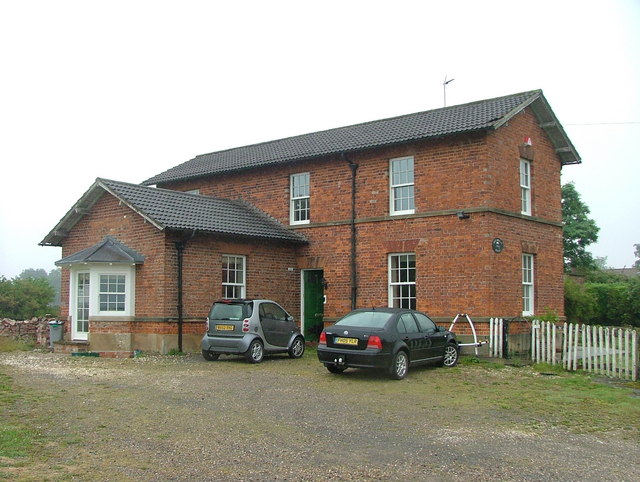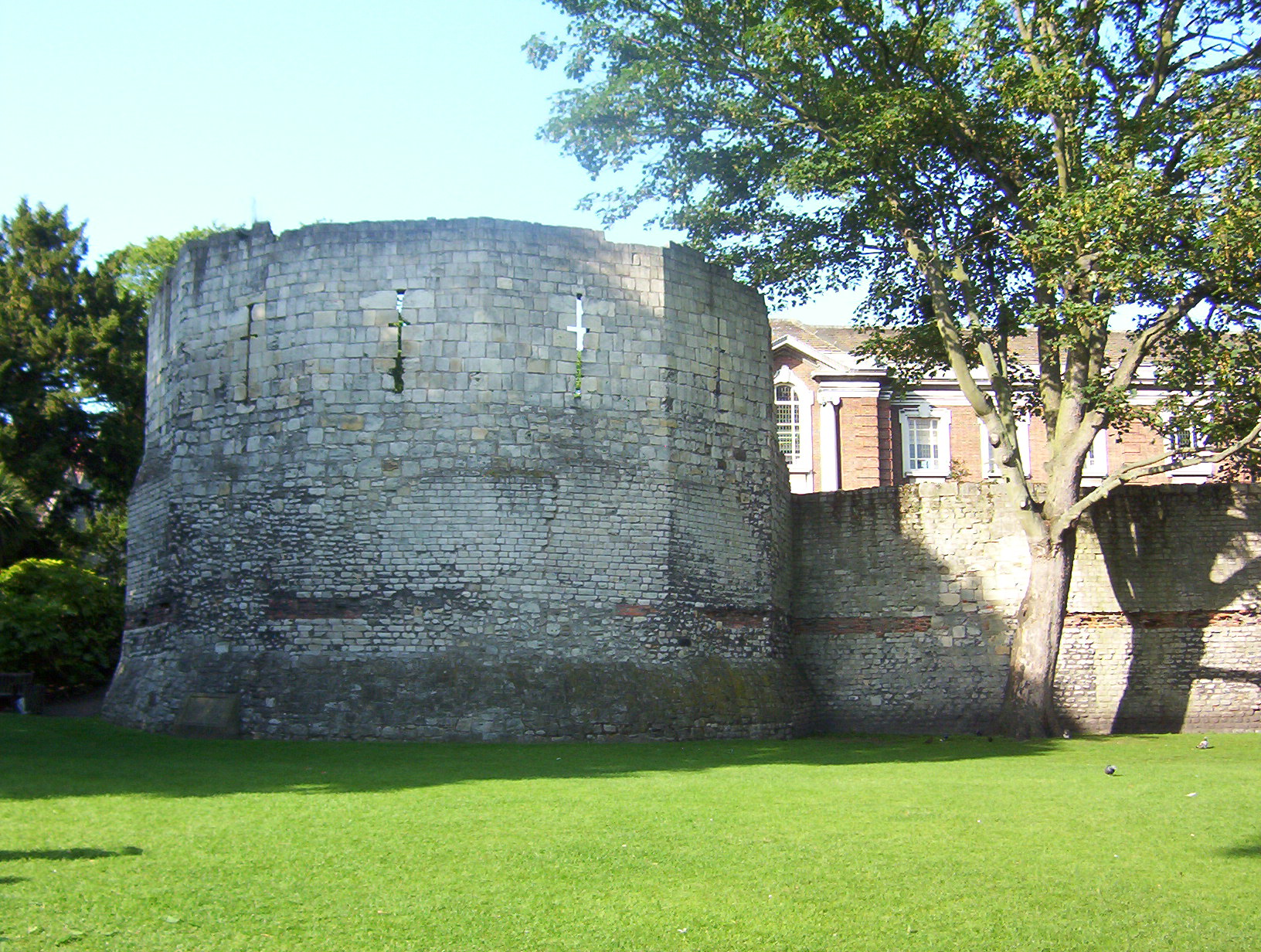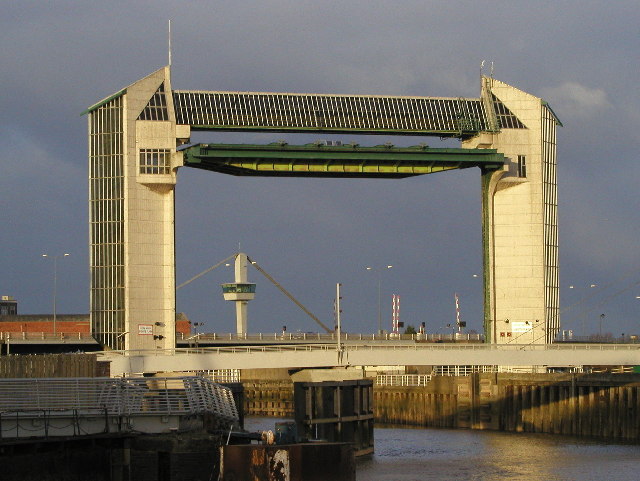|
Londesborough
Londesborough is a village and civil parish in the East Riding of Yorkshire, England. It is situated approximately north of the market town of Market Weighton. The civil parish is formed by the village of Londesborough and the hamlet of Middlethorpe. According to the 2011 UK census, Londesborough parish had a population of 182, a reduction of one on the 2001 UK census figure. The Yorkshire Wolds Way National Trail, a long distance footpath passes through the village. Some scholars suggest the still-undiscovered Roman camp of Delgovicia is in the vicinity of Londesborough. Londesborough Hall was a country house in the village but all that now remains is the park land that surrounded the house which is called Londesborough Park. The church dedicated to All Saints was designated a Grade I listed building in 1967 and is now recorded in the National Heritage List for England, maintained by Historic England. In 1823 Londesborough was a civil parish in the Holme Beacon Division ... [...More Info...] [...Related Items...] OR: [Wikipedia] [Google] [Baidu] |
Londesborough Hall
Londesborough Hall is a country house in the village of Londesborough in the East Riding of Yorkshire, England, close to the towns of Market Weighton and Pocklington. The original Elizabethan building was demolished in 1819 and replaced by the present Victorian house. History The Londesborough estate belonged, in the 16th and early 17th century, to the Clifford family, the Earls of Cumberland. The original house was built by George Clifford, 3rd Earl of Cumberland, in 1589, created in the Elizabethan style. In 1643, the last Earl, Henry Clifford, 5th Earl of Cumberland died. His only child, Lady Elizabeth Clifford, had married Richard Boyle, 2nd Earl of Cork, and thus the property passed to the Boyle family. In 1664, Richard Boyle was also created 1st Earl of Burlington. Robert Hooke was engaged to enlarge the house and lay out formal gardens, between 1679 and 1683. Richard Boyle, 3rd Earl of Burlington, who was the principal patron of the Palladian movement in England, and ... [...More Info...] [...Related Items...] OR: [Wikipedia] [Google] [Baidu] |
Duke Of Devonshire
Duke of Devonshire is a title in the Peerage of England held by members of the Cavendish family. This (now the senior) branch of the Cavendish family has been one of the wealthiest British aristocratic families since the 16th century and has been rivalled in political influence perhaps only by the Marquesses of Salisbury and the Earls of Derby. History Although the Cavendish family estates are centred in Derbyshire, they hold the titles of "Duke of Devonshire" and their subsidiary title of earldom of Devonshire (neither peerage is related to the ancient title of Earl of Devon). The first Earl may have chosen "Devonshire" simply because places and lands he was associated with were already attached to existing peerages at the College of Arms. The title remains associated with "Devonshire" even though in modern usage it is the county of Devon. Another reason for the choice of a non-local or regional name was to avoid antagonising the powerful Stanley family from the Midlan ... [...More Info...] [...Related Items...] OR: [Wikipedia] [Google] [Baidu] |
Richard Boyle, 1st Earl Of Burlington
Richard Boyle, 1st Earl of Burlington, 2nd Earl of Cork (20 October 1612 – 15 January 1698) was an Anglo-Irish nobleman who served as Lord High Treasurer of Ireland and was a Cavalier. Early life He was born at ''The College'' in Youghal in the south-east of County Cork, Ireland, as the sixth child and second son of Richard Boyle, 1st Earl of Cork and his second wife, Catherine Fenton, daughter of Sir Geoffrey Fenton. His brother was the chemist Robert Boyle, and his sister was Lady Ranelagh. On 13 August 1624, The Hon. Richard Boyle, Jr., was knighted at his father's house in Youghal by Lord Falkland, the Lord Deputy of Ireland. As the Hon. Sir Richard Boyle, he then went on travels abroad with an annual allowance of £1500. Civil War In 1639, the young Sir Richard undertook to raise, arm, and provide 100 horses to attend upon King Charles I of England in his expedition into the North of England against the Scots. For this and other occasions, his father, Lord Cork, sup ... [...More Info...] [...Related Items...] OR: [Wikipedia] [Google] [Baidu] |
Middlethorpe, East Riding Of Yorkshire
Middlethorpe is a hamlet in the East Riding of Yorkshire, England. It is situated approximately north-east of the market town of Market Weighton. It lies to the southeast of the A614 road and consists principally of Middlethorpe Farm. Middlethorpe forms part of the civil parish In England, a civil parish is a type of Parish (administrative division), administrative parish used for Local government in England, local government. It is a territorial designation which is the lowest tier of local government below district ... of Londesborough. References * Hamlets in the East Riding of Yorkshire {{EastRiding-geo-stub ... [...More Info...] [...Related Items...] OR: [Wikipedia] [Google] [Baidu] |
Yorkshire Wolds Way
The Yorkshire Wolds Way is a National Trail in Yorkshire, England. It runs 79 miles (127 km) from Hessle to Filey, around the Yorkshire Wolds. At Filey Brigg, it connects with the Cleveland Way, another National Trail. In 2007 the Yorkshire Wolds Way celebrated the 25th anniversary of its official opening which took place on 2 October 1982. Route The route of the Yorkshire Wolds Way passes close to or through the following places: * Hessle * North Ferriby * Melton * Welton * Brantingham * South Cave * North Newbald * Goodmanham * Market Weighton * Londesborough * Nunburnholme * ''Pocklington'' * Millington * Huggate * Fridaythorpe * Thixendale * Wharram Percy * Wharram le Street * Wintringham * Sherburn * Potter Brompton * Ganton * Muston * Filey Places in italics are slightly off the main route. BBC documentary ''Yorkshire Wolds Way'', a 2017 two-part BBC television documentary, features a journey along the Yorkshire Wolds Way. Presenter Paul Ros ... [...More Info...] [...Related Items...] OR: [Wikipedia] [Google] [Baidu] |
Market Weighton
Market Weighton ( ) is a town and civil parishes in England, civil parish in the East Riding of Yorkshire, England. It is one of the main market towns in the East Yorkshire Wolds and lies midway between Kingston upon Hull, Hull and York, about from either one. According to the United Kingdom Census 2011, 2011 UK census, Market Weighton parish had a population of 6,429, an increase on the United Kingdom Census 2001, 2001 UK census figure of 5,212. History The 19th-century English lexicographer William Smith (lexicographer), Sir William Smith proposed Market Weighton as the location of the still-undiscovered Roman Empire, Roman castra, camp of Delgovicia. Historically the town was listed in the ''Domesday Book'' as "Wicstun" and was granted its charter to become a market town in 1251. Notable architecture includes: a parish church, parts of which are Norman architecture, Norman, the Londesborough Arms (an 18th-century coaching inn), a Methodist Church of Great Britain, Wesleya ... [...More Info...] [...Related Items...] OR: [Wikipedia] [Google] [Baidu] |
Delgovicia
Delgovicia or Delgovitia was a Romano-British town in Britain, mentioned by the Antonine Itinerary as being east of Eboracum (Roman York). It is also mentioned by the Geographer of Ravenna as ''Devovicia'' or ''Devovitia''. Its location is currently unknown. Several scholars have postulated various identifications for Delgovicia: * William Smith suggested it was probably Market Weighton. *Benjamin Pitts Capper suggested it was Londesborough. * A. L. F. Rivet & Colin Smith suggest it was probably Wetwang Wetwang is a Yorkshire Wolds village and civil parish in the East Riding of Yorkshire, England, west of Driffield on the A166 road. At the 2011 census, it had a population of 761, an increase on the 2001 census figure of 672. Topony .... *Others suggest the ruins at Millington. References * {{reflist, 2 Lost ancient cities and towns Roman towns and cities in England History of the East Riding of Yorkshire ... [...More Info...] [...Related Items...] OR: [Wikipedia] [Google] [Baidu] |
Brough, East Riding Of Yorkshire
Brough ( , locally ) is a town in the East Riding of Yorkshire, England. It is part of the civil parish of Elloughton-cum-Brough with the neighbouring village of Elloughton. Brough is situated on the northern bank of the Humber Estuary, approximately west of Hull city centre. Brough has a long association with BAE Systems. History The town was known as Petuaria during the Roman period, and served as the capital of the Celtic tribe of the Parisi. Petuaria marked the southern end of the Roman road known now as Cade's Road which ran roughly northwards for a hundred miles to Pons Aelius (modern day Newcastle upon Tyne). The town's name is simply from the Old English ''burh'' meaning "fortification" and is thus related to the terms borough and burgh. Brough was created a town by the Archbishop of York in 1239, granted the same liberties as Beverley. There is no record of these liberties having been employed, and the settlement operated as a village for further centuries ... [...More Info...] [...Related Items...] OR: [Wikipedia] [Google] [Baidu] |
York
York is a cathedral city with Roman Britain, Roman origins, sited at the confluence of the rivers River Ouse, Yorkshire, Ouse and River Foss, Foss in North Yorkshire, England. It is the historic county town of Yorkshire. The city has many historic buildings and other structures, such as a York Minster, minster, York Castle, castle, and York city walls, city walls. It is the largest settlement and the administrative centre of the wider City of York district. The city was founded under the name of Eboracum in 71 AD. It then became the capital of the Roman province of Britannia Inferior, and later of the kingdoms of Deira, Northumbria, and Jórvík, Scandinavian York. In the Middle Ages, it became the Province of York, northern England ecclesiastical province's centre, and grew as a wool-trading centre. In the 19th century, it became a major railway network hub and confectionery manufacturing centre. During the Second World War, part of the Baedeker Blitz bombed the city; it ... [...More Info...] [...Related Items...] OR: [Wikipedia] [Google] [Baidu] |
Roman Roads In Britain
Roman roads in Britannia were initially designed for military use, created by the Roman Army during the nearly four centuries (AD 43–410) that Britannia was a province of the Roman Empire. It is estimated that about of paved trunk roads (surfaced roads running between two towns or cities) were constructed and maintained throughout the province. Most of the known network was complete by 180. The primary function of the network was to allow rapid movement of troops and military supplies, but it subsequently provided vital infrastructure for commerce, trade and the transportation of goods. A considerable number of Roman roads remained in daily use as core trunk roads for centuries after the end of Roman rule in Britain in 410. Some routes are now part of the UK's national road network. Others have been lost or are of archeological and historical interest only. After the Romans departed, systematic construction of paved highways in the United Kingdom did not resume unt ... [...More Info...] [...Related Items...] OR: [Wikipedia] [Google] [Baidu] |
United Kingdom Census 2011
A Census in the United Kingdom, census of the population of the United Kingdom is taken every ten years. The 2011 census was held in all countries of the UK on 27 March 2011. It was the first UK census which could be completed online via the Internet. The Office for National Statistics (ONS) is responsible for the census in England and Wales, the General Register Office for Scotland (GROS) is responsible for the census in Scotland, and the Northern Ireland Statistics and Research Agency (NISRA) is responsible for the census in Northern Ireland. The Office for National Statistics is the executive office of the UK Statistics Authority, a non-ministerial department formed in 2008 and which reports directly to Parliament. ONS is the UK Government's single largest statistical producer of independent statistics on the UK's economy and society, used to assist the planning and allocation of resources, policy-making and decision-making. ONS designs, manages and runs the census in England an ... [...More Info...] [...Related Items...] OR: [Wikipedia] [Google] [Baidu] |
Humber
The Humber is a large tidal estuary on the east coast of Northern England. It is formed at Trent Falls, Faxfleet, by the confluence of the tidal rivers Ouse and Trent. From there to the North Sea, it forms part of the boundary between the East Riding of Yorkshire on the north bank and North Lincolnshire on the south bank. Although the Humber is an estuary from the point at which it is formed, many maps show it as the River Humber. Below Trent Falls, the Humber passes the junction with the Market Weighton Canal on the north shore, the confluence of the River Ancholme on the south shore; between North Ferriby and South Ferriby and under the Humber Bridge; between Barton-upon-Humber on the south bank and Kingston upon Hull on the north bank (where the River Hull joins), then meets the North Sea between Cleethorpes on the Lincolnshire side and the long and thin headland of Spurn Head to the north. Ports on the Humber include the Port of Hull, the Port of ... [...More Info...] [...Related Items...] OR: [Wikipedia] [Google] [Baidu] |


.jpg)





